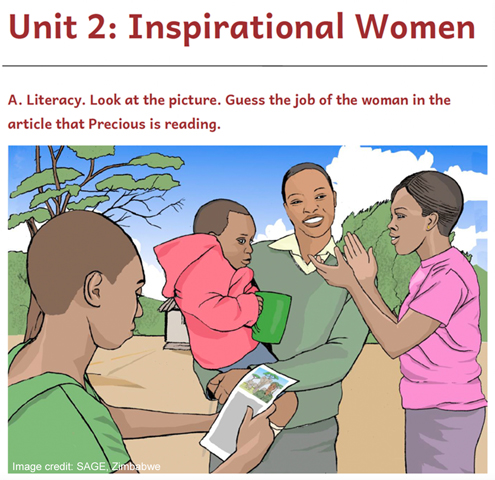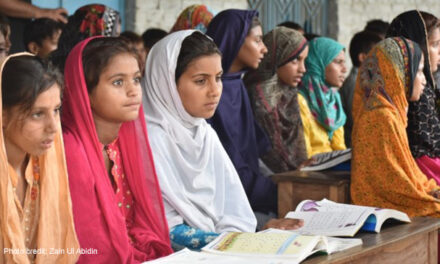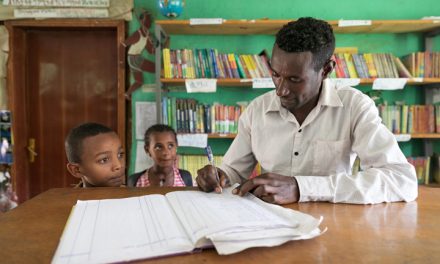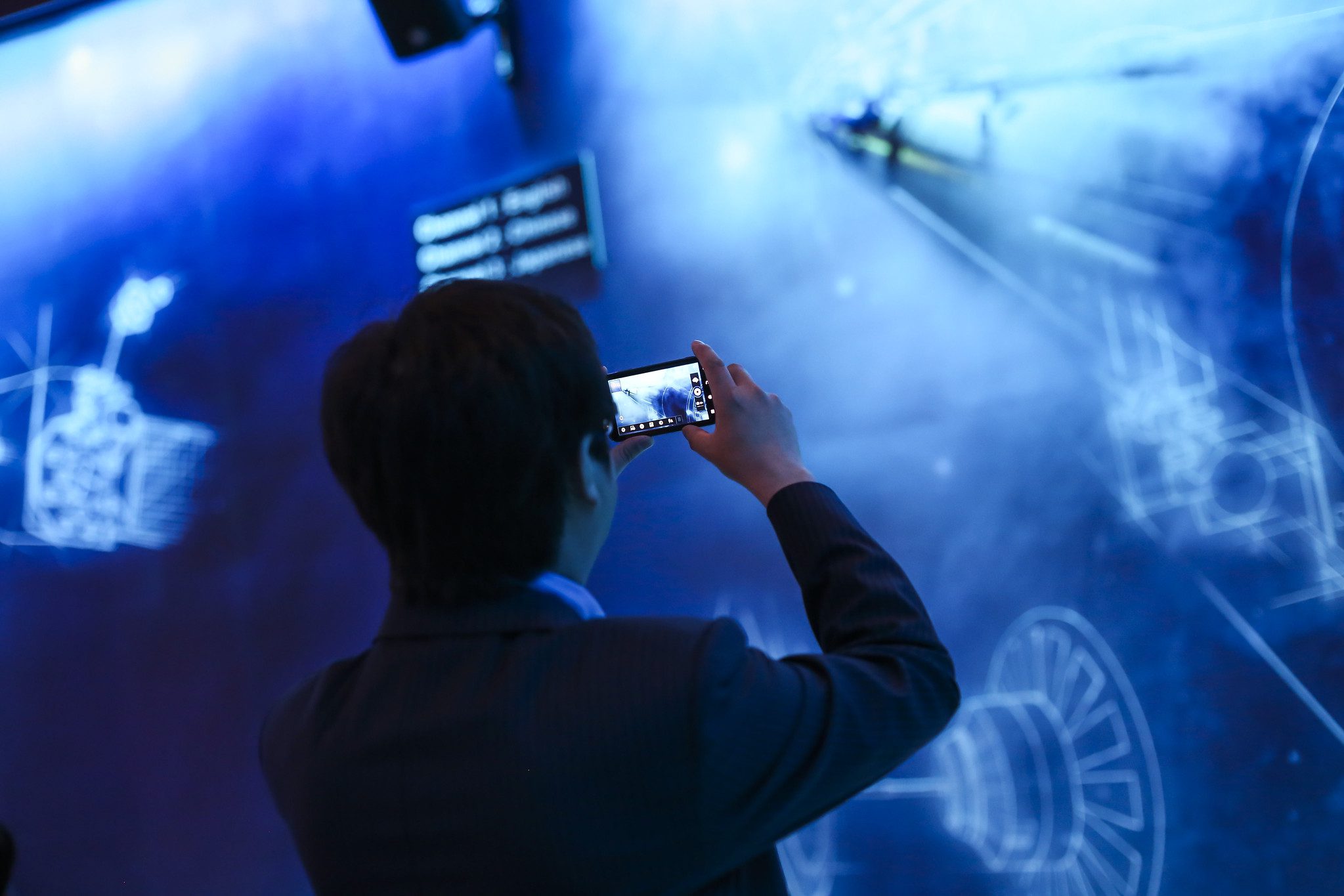This blog was written by Liz Chamberlain, Professor of Primary Education at The Open University and Caroline Dean, Programme Manager, Plan International UK
The focus for this year’s International Women’s Day on 8th March – the annual global day that celebrates the achievements of women – challenges us all, as individuals and citizens, and in our roles across academic institutions, NGOs, governments, charities, and networks to do more to #BreakTheBias. To imagine and create an equitable and inclusive world where women thrive and are empowered to forge the changes they want to see.
Whilst the attention of the day is on women, the conversation must start with girls and young women. As the women of tomorrow, changes are needed to break the bias that impacts girls’ and young women’s lives from an early age. However, empowering them to actualise their rights to education and livelihoods is frequently met with challenges and barriers, adding to the unfair pressures, feeling of additional burdens and heightened responsibility in their lives.
For many girls and young women in the world, and particularly those in the most fragile states, access to education is underpinned by pervasive gender inequality and discussion of their aspirations, their futures, and potential pathways into imagined futures remains limited. Yet, education has massive transformational power, with gender-transformative education aiming to empower stakeholders – learners, teachers, communities and policy-makers – to examine, challenge, and change the harmful gender norms that disadvantage girls and women.
Whilst girls’ and young women’s lives are often framed around the concept of marginalisation and the impact of their intersecting vulnerabilities, it is also useful to speak of them having ‘agentic lives lived across both sides of the marginalisation boundary’.
Involving girls and young women and finding authentic ways to represent their hopes for the future has been a key driver in the learning design and implementation of the Supporting Adolescent Girls’ Education (SAGE)[i] learning programme in Zimbabwe – a five-year project funded by UK Aid through the Girls’ Education Challenge[ii], which is now in its fourth year. The two-year SAGE accelerated learning programme is enabling over 12,000 out-of-school or never-been-to school adolescent girls and women to acquire foundational skills in literacy, numeracy and English. Supporting learners to enter at aged 10-19 years means that SAGE works predominantly with girls, but also young women. Key to the programme’s learning design was to work in partnership across the consortium and to involve those actors who were working most closely with adolescent girls and women to capture the local knowledge and understandings about their aspirations and interests.
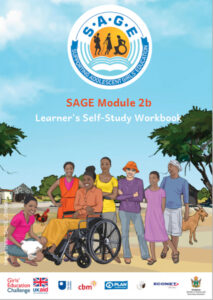 The two-year learning programme (240 hours of learning) has been designed around individual learner workbooks with learning content that mirrors the lives of girls and young women. This was achieved through commissioned and contextualised artwork. As the girls and young women open their own learner workbook, they see girls and young women who look like them, live lives like them, and aspire to the same kinds of futures. The artwork reflects the content of 10 unit stories that were especially written using knowledge shared by the girls and young women and together they form the spine of the learning content. Every unit story is presented in Ndebele, Shona, Kalanga and English, and features key characters, each of whom was created to reflect the potential future pathways of girls on the programme. For example, there is Chiedza, the entrepreneur, Bethsaida the businesswoman, and two younger girls Precious and Rudo who have hopes of returning to school. The stories also include inspirational women, like Anokosha, part of the all-women group of game-rangers, the Akashinga; or Thandiwe, the bank teller who has a disability; Dee, the Plan Zimbabwe driver; and the Zimbabwean netball team, the Gems. The stories also showcase other #BreakTheBias occupations, including a mobile phone repairer, a health care worker and a caterer. The programme’s iterative design meant that as the team learned more about the girls and young women, they were invited to share their ideas for story content; for example, both the bank teller and poultry farmer are ideas from SAGE young women.
The two-year learning programme (240 hours of learning) has been designed around individual learner workbooks with learning content that mirrors the lives of girls and young women. This was achieved through commissioned and contextualised artwork. As the girls and young women open their own learner workbook, they see girls and young women who look like them, live lives like them, and aspire to the same kinds of futures. The artwork reflects the content of 10 unit stories that were especially written using knowledge shared by the girls and young women and together they form the spine of the learning content. Every unit story is presented in Ndebele, Shona, Kalanga and English, and features key characters, each of whom was created to reflect the potential future pathways of girls on the programme. For example, there is Chiedza, the entrepreneur, Bethsaida the businesswoman, and two younger girls Precious and Rudo who have hopes of returning to school. The stories also include inspirational women, like Anokosha, part of the all-women group of game-rangers, the Akashinga; or Thandiwe, the bank teller who has a disability; Dee, the Plan Zimbabwe driver; and the Zimbabwean netball team, the Gems. The stories also showcase other #BreakTheBias occupations, including a mobile phone repairer, a health care worker and a caterer. The programme’s iterative design meant that as the team learned more about the girls and young women, they were invited to share their ideas for story content; for example, both the bank teller and poultry farmer are ideas from SAGE young women.
The original intention of the workbooks was to provide the girls and young women with text and images that mirrored their own lives; thus, avoiding the perpetuation of gender-based stereotypes often reflected in the under-representation of women in textbooks. However, it was evident through the series of case studies of girl-to-girl conversations that the stories had become a critical feature of the programme design. The young women took inspiration from the characters in the stories and they found familiar contexts in the story content (e.g. growing tomatoes) and were able to draw that local experience into their SAGE experience. The stories also had a role in changing perceptions and behaviours towards young women with disabilities, one girl commented on a Unit story, ‘…proving that “disability is not inability”’.
Through the stories, girls and young women also learn financial and business-focused skills. One girl recalled that she learned that less capital is required to start tomato farming, unlike her previous desired livelihood of chicken rearing. The careers featured in the stories, for example, hairdressing, baking and welding, also complement the programme’s integrated skills training component where SAGE young women learn vocational skills with local tradespeople. With these technical and business development skills, as well as reinforced aspirations, there are early indications that the goal of young women pursuing their own set-up of businesses is beginning.
Finally, and appropriate for International Women’s Day, the young women learned that women can venture into jobs that are perceived to be for men, with one girl saying ‘… a job has no gender’.
The SAGE comprehensive set of resources is freely available here. All the materials are Open Educational Resources (OER), and with the exception of named third party contributions, can be adapted for your own educational context.
[i] SAGE (Supporting Adolescent Girls’ Education) is a UK Aid-funded programme through the UK’s Foreign, Commonwealth and Development Office’s Girls’ Education Challenge initiative, led by Plan International and involving a consortium of six partners and the Ministry of Primary and Secondary Education, Zimbabwe (MoPSE).
[ii] The views in this blog represent those of the co-authors and are not necessarily those of the FCDO.

